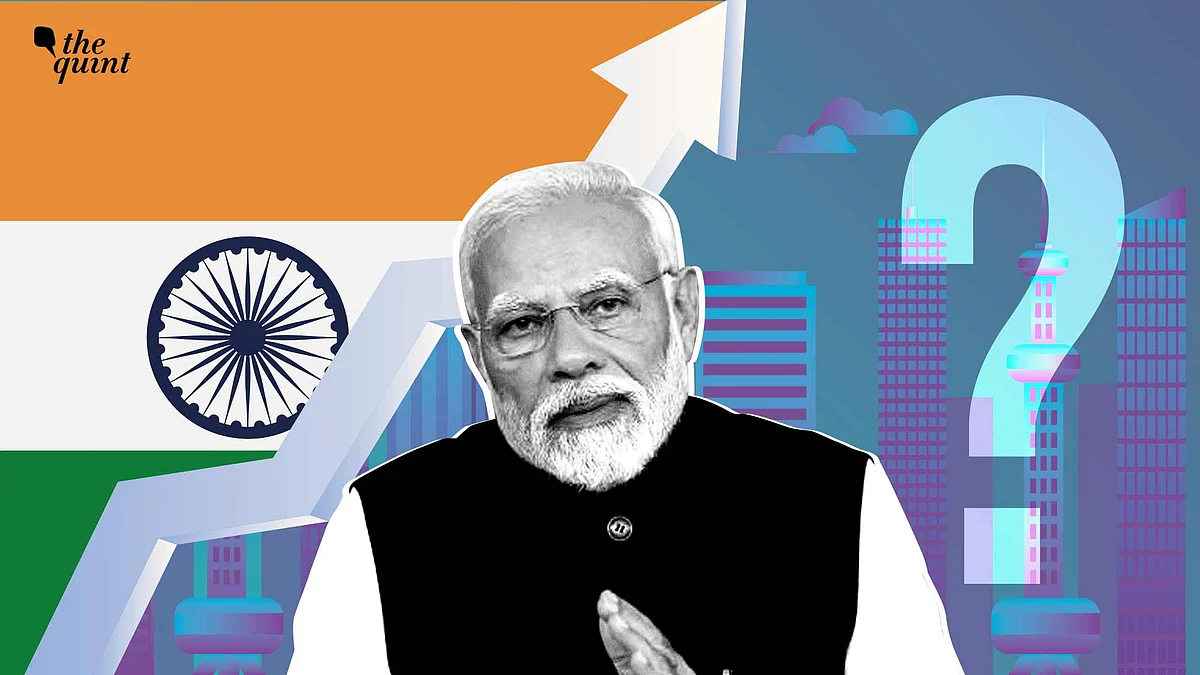
India's Slow Turn Towards 'Viksit Bharat'
It will take a “Trumpian” makeover to shake the government out of the comfortable cruise control it is on.

advertisement
A week after the Union Budget was announced, the big question remains:
Will it help India step onto the path to Viksit Bharat by 2047?
If high and inclusive growth is the surest way to reach that goal, the finance minister’s proposals for 2025-26 generally point in the right direction. However, that is not saying much.
Most budgets since 1991-92 have charted a similar path. There is wide recognition that the 1991-92 budget templated the optimum reform strategy for India. Sadly, it also ingrained in the political class the mantra that bold reform steps are politically saleable only when the economy is on the brink of ruin, as it was in 1991-92.
This strategy was evident from the short-lived period of reforms, such as privatisation under Prime Minister Atal Bihari Vajpayee, from 2000 to 2003. Sadly, that legacy endures, reducing the appetite for political risk.
Stock Market Red Flags
Stock markets are a reasonable barometer of short-term variations in economic prospects.
This includes provision of free cereals with a splash of lentils – distributed free to 180 million people, which pegs poverty levels at about 12.5 percent of population. This set could fall below the minimum poverty income level if free food distribution is ended.
Other welfare measures, such as affordable homes for the poor, free electricity, free bus rides for women in many cities, and subsidised rail travel in unairconditioned trains, are additional support systems, which drain government budgets.
The absence of substantive feel-good drivers such as big-bang privatisation of public sector banks and loss-making state-owned enterprises; the income tax giveaways for the middle class worth about Rs 1 lakh crore in value (about 3.5 percent of the estimated tax receipts); and import tax reductions extended as an olive branch to the new 'import tax police' in the office of President Donald Trump — makes the budget math dodgy.
This, in turn, makes it difficult to achieve next year’s fiscal deficit target of 4.4 percent (versus 4.8 percent this year), which remains well above the 4 percent outer norm, with some cushion maintained, to allow counter-cyclical stimulus.
Ignoring stock market reactions to the budget goes back to Finance Minister Manmohan Singh, the architect of India’s 1991-92 liberalisation. Finance Minister Nirmala Sitharaman is not alone in trying to feel the stones whilst crossing the river of global fiscal turbulence.
On the flip side are the solid credentials built up by the finance minister over the past eight years, as a fiscal conservative and scrupulously prudent accountant. She built this image from 2019, ending the past practice of off-budget financing, which had led to a huge backlog of payables to public sector enterprises, just to show paper compliance with fiscal deficit targets.
However, global uncertainties remain a key factor advising caution for investors.
Right Path, Wrong Pace
Governments cannot afford to be passive, waiting for foreign and domestic private investors to invest. The public expects the government to have a game plan ready to meet all eventualities.
The easiest option is to substitute absent private investment – which has fallen by three to four percent of the gross domestic product (GDP) in recent years – with enhanced public investment. This strategy presents a Hobson’s choice between continuing the welfare programmes or investing in public sector projects to drive GDP growth.
The Public-Private Partnership model, which is once again in play – after a gap of nearly a decade – seeks to principally reduce investor risk. Additionally, lowering inflation and interest rate can increase returns.
However, monetary policy choices are constrained by the need to retain at least a two percent differential between interest rates in India and developed economies such as the US. This is to attract inflows of financial capital — as opposed to the net outflow we are seeing today — to avoid the rupee being shorted by predatory financial investors.
Lessons From China
It is not generally acknowledged that whilst Viksit Bharat is a long-term goal, the immediate economic challenge for India is more pedestrian: to transition from lower-middle-income (LMI) level, as defined by the World Bank, to the upper-middle-income (UMI) category.
India transitioned from low-income (LI) to LMI in 2007 but has remained stuck there for 18 years.
It has been 24 years since China started its journey from low-income to high-income, and it has yet to reach there. The East Asian country’s transition was also timed right, with helpful global trading arrangements for domestic growth via exports for the developing world.
That liberal, helpful, “win-win” game plan, to grow developing economy markets, absorb technology products, investments, and services pioneered in advanced economies, is now in tatters. To navigate the choppy waters of a relatively “closed global economy”, India must depart from its "business as usual” approach, but there were insufficient indicators in the budget to assess such prospects.
India appears to be in a reactive mode, waiting for advanced economies to make the first move. For a successful transition, we must become part of the global team making the changes, just as China did.
(Sanjeev S Ahluwalia is a Distinguished Fellow, Chintan Research Foundation (CRF), a former IAS officer and an expert in governance and economic regulation. This is an opinion piece. All views expressed are the author’s own. The Quint neither endorses nor is responsible for them.)
- Access to all paywalled content on site
- Ad-free experience across The Quint
- Early previews of our Special Projects
Published: undefined